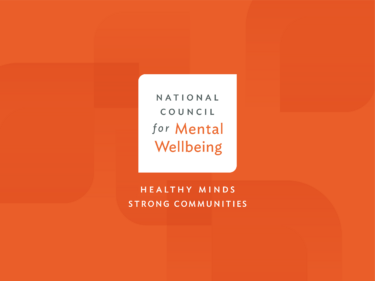A patient walks into a hospital in rural Kentucky, with thoughts of suicide and trouble sleeping. A similar patient, presenting with the same symptoms, walks into a hospital 700 miles away in New York City. One patient is hospitalized for a week and then referred to a two-week partial-hospitalization program. The other patient leaves the hospital after a brief discussion with the doctor, holding a prescription and a printout of contact information for numerous local therapists.
What process occurred in each case to determine the correct “service intensity” or “level of care” for the patient? Was the recommended level of care determined by the payer, the provider or both in collaboration? Did the provider, the payer and the patient have a “common language” or set of criteria they could use to determine which intervention could best provide for the patient’s safety and successful outcome? Which treatment intervention (level of care) was more cost-effective and efficient? Which level of care provided a higher quality of care leading to improved patient outcomes?
As with any medical decision, there are a multitude of factors that determine what intensity of care or interventions a patient will or will not receive. The problem, however, is that these important determinations regarding intensity of care – right down to whether or not a suicidal patient will be referred for hospitalization or residential crisis stabilization vs. being discharged – often vary widely depending on the policies and procedures followed by payers, providers, institutions and states, including a host of factors such as training of providers and utilization managers, provider or payer preferences or even biases, capacity and availability of different levels of care and individual policies or organizational protocols.
A new report from the Medical Director Institute (MDI) at the National Council for Mental Wellbeing, Toward a National Standard for Service Intensity Assessment and Planning for Mental Health Care, seeks to move the behavioral health field toward greater standardization in determinations of service intensity or levels of care, both for acute crises like the patient above, as well as for ongoing service needs..
Every day, medical professionals must make decisions about how to treat patients with substance use and mental health challenges. And their case loads are only increasing: 1 in 5 Americans report experiencing a mental health challenge in the past year, and 20 million Americans have a substance use disorder. While physician autonomy is an important cornerstone of patient-centered care, when unchecked, it can lead to extreme variability in patient treatment, patient outcomes and overall costs. Aligning providers to a single model to help determine severity and course of treatment could have significant benefits, not only at the individual patient and provider level, but also on a larger systems level, speaking to the efficiency of the overall health care system.
Mental health and substance use providers are in dire need of efficient systems of care that accurately and fairly allocate resources to maximize positive substance use and mental health outcomes. As outlined in the new MDI report, service intensity assessment is ultimately about most effectively matching resource allocation (and effective use of those limited resources) with optimal response to the needs of individuals and families who are experiencing significant MH or SU challenges.
To accomplish the goal of having a “national standard” for service intensity assessment for individuals and families seeking MH care, the MDI Report recommends the LOCUS Family of Tools (LOCUS FT), developed by two non-profit professional associations – the American Association for Community Psychiatry (AACP) and the American Academy of Child and Adolescent Psychiatry (AACAP) – in the 1990s, and regularly updated since that time. This family of tools provide multidimensional online assessments for adults and children that determine a level of care in behavioral health based on six dimensions of assessment: risk of harm, functional status, comorbidity and developmental disabilities, recovery environment, treatment and recovery history, and engagement and recovery status.
“The LOCUS Family of Tools provides a standardized approach to determining the overall intensity of the array of services needed by a person with mental illness, taking into account not only their symptoms and risk but also social determinants of health, like the recovery environment they will be living in, their past resilience and their level of engagement with supportive friends and family,” states report co-author Dr. Joe Parks. “Having a standardized method provides opportunity to identify and reduce inequities in care received.”
Similarly, the American Society of Addiction Medicine (ASAM) Criteria, has a complementary multidimensional assessment for service intensity and a corresponding continuum of care that specifically addresses treatment of substance use disorder. This approach to assessment and planning increases engagement in addiction services and reduces the negative effects of both over- and underutilization of treatment services on resource management and health outcomes.
Both the LOCUS FT and the ASAM Criteria offer a standardized rating of the individual’s treatment and service needs, along with a standardized continuum of treatment intensity linked by a crosswalk algorithm to determine the most appropriate amount and type of health care services, supports, treatments and interventions. The goal being to find the optimal balance between the quality of services and supports (i.e., those most likely to yield the best outcomes) and the cost, in the least restrictive setting that is safe.
Adopted in over 26 states and several international locations for acute and continuing care service assessment, the LOCUS FT works to balance the components of service intensity, such as the setting in which care is delivered (e.g., residential vs. community), intensity and type of staffing (e.g., medical vs. nonmedical), frequency of contact, intensity of programming provided and amount of care coordination and case management.
Dr. Parks adds that “the use of service intensity planning like the LOCUS FT has become the generally accepted community standard of care, with an increasing number of states and Managed Care Organizations (MCO) purchasing contracts of health care coverage requiring implementation and use. LOCUS FT improves communication and understanding between health care providers and MCO staff by providing a common language to discuss patient needs and services.”
In organizations that have adopted the LOCUS FT or the ASAM Criteria, the aggregation of data across patient assessments has allowed for benchmarking of service utilization to identify gaps. Organizations can then reallocate resources based on those gaps or, in cases where additional resources are needed, engage in planning or advocacy efforts for additional resources using clear and actionable assessment data demonstrating the need.
The goal of standardized health care is a worthy one indeed. It has the power to transform behavioral health care to ensure greater equality and equity, so you receive the same high-quality services whether you live in rural Kentucky or downtown New York City. Expanding the utilization of tools that represent a national standard for service intensity determination, as exemplified by the LOCUS FT and the ASAM Criteria, is long overdue. Indeed, by embracing such tools, we pave the way for a future where every American has access to consistent, top-tier behavioral health care.
READ FULL REPORT | Toward a National Standard for Service Intensity Assessment and Planning for Mental Health Care
Author
Senior Advisor, Substance Use Disorder in the Strategy and Growth Office
National Council for Mental Wellbeing
See bio



